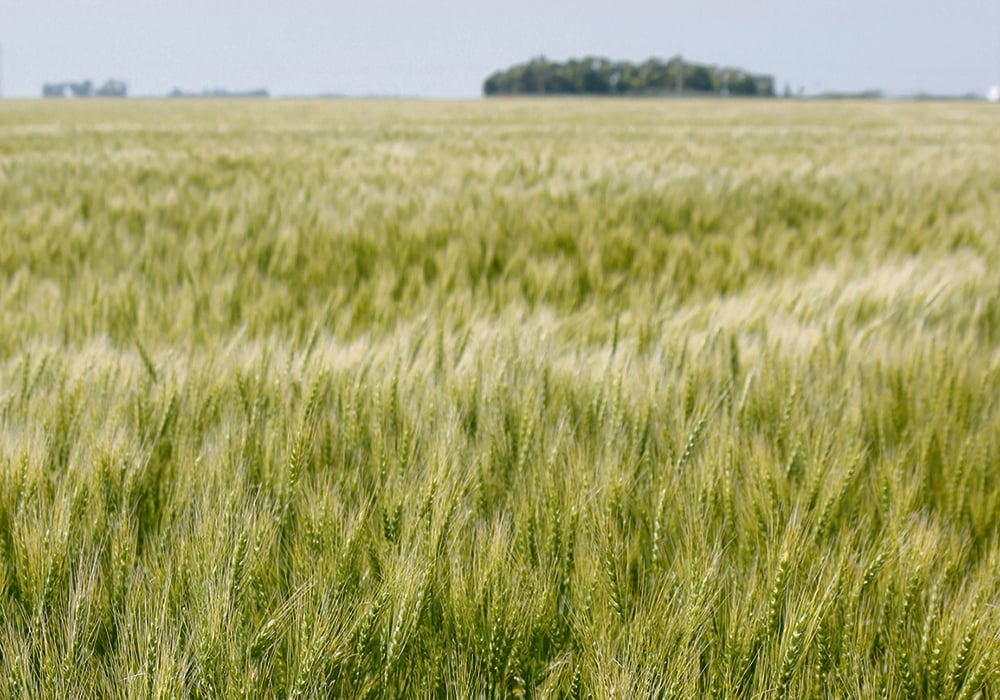Aussie gene editing aims to increase wheat yields

Australian trials for gene-edited wheat, promising 10% productivity boost, commence. InterGrain and Inari collaborate, aiming for market presence by 2028. Gene editing accelerates crop improvements, addressing food security and sustainability. Regulatory approval aligns with Canada, US, and Japan. China approves disease-resistant wheat. Inari explores high-yielding soybean. Agriculture Canada develops wheat for optimized sunlight usage. Unlike GM crops, gene-edited wheat targets human consumption, signaling potential shifts in agricultural technology and consumer acceptance.
CANBERRA, Australia (Reuters) — The groundwork for a major trial of gene-edited wheat has begun in Australia.
A company is growing hundreds of varieties it says could be up to 10 per cent more productive and make farming more sustainable.
Gene editing is an emerging technique that its advocates say could create more nutritious, hardier crops with higher yields and less need for water, fertilizer and chemicals.
Unlike genetic modification, gene editing does not introduce foreign DNA, instead manipulating the existing natural genome.
Because of that, many regulators and scientists see it as less risky than genetic modification and closer to traditional plant breeding. The technique also allows more than one gene to be changed, allowing a wider range of modifications.
Australian seed breeder InterGrain earlier this year imported several thousand wheat seeds created by U.S. agritech company Inari, including hundreds of new genetic variations, InterGrain chief executive officer Tress Walmsley said.
These seeds are now growing in a testing greenhouse in southeastern Queensland. Seeds from those plants will be used to grow more plants, producing enough seeds to plant at more than 45 trial sites across the country in the 2025 growing season, Walmsley said.
“Our job is to work out which gene combination gives the best results. Our goal is at least 10 per cent yield improvement. These seeds have the potential to achieve that,” she said.
“Potentially we could be looking to have products in the market in around 2028.”
Inari uses artificial intelligence to map huge numbers of potential gene edits and then applies CRISPR-Cas — a tool that can find and alter selected stretches of DNA — to change multiple genes simultaneously, allowing it to dial characteristics up or down.
Gene editing could achieve gains 10 to 15 times faster than traditional plant breeding, InterGrain and Inari said.
Some gene-edited crops are already available, but most offer specific nutritional improvements or disease resistance rather than a range of changes aimed at higher productivity per unit of water or fertiliser.
“We want to solve food security, climate change and farm profitability at the same time,” said Inari CEO Ponsi Trivisvavet.
Australia is one of the world’s biggest wheat exporters, and Walmsley said InterGrain was working to make sure regulatory processes were in place that would allow Australia to sell gene-edited crops into its export markets.
Regulators in countries such as Canada, the United States and Japan have decided gene-edited crops are akin to those derived from breeding, making their approval simpler.
The European Union is moving in a similar direction, and China, the biggest wheat producer and consumer, this month approved a gene-edited disease-resistant wheat for planting.
Inari is also working with seed companies to commercially launch a gene-edited high-yielding soybean in the U.S. It did not say what yield improvements these beans offered.
Agriculture Canada researchers are using gene editing to develop wheat that makes better use of sunshine.
Genetically modified soybeans and corn have been widely adopted in recent decades but consumers and regulators have been less willing to sanction GM wheat because unlike soybeans and corn, which are mainly fed to animals, wheat is a staple food for humans.
Source Link : https://www.producer.com/news/aussie-gene-editing-aims-to-increase-wheat-yields/
















